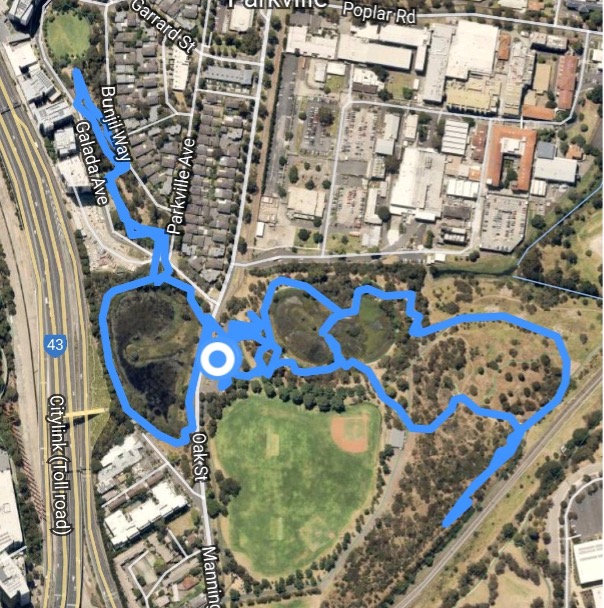12 June 2024
Leader: Phillip West
After a sojourn overseas it was nice to be back in the familiar Melbourne landscape, although this lovely city of ours could have served up something a little better weatherwise. A typical Melbourne winter day with grey skies, showers and a cold breeze awaited the weekday birders. Firstly, I must thank Janis for so ably standing in for me last month and writing such an excellent blog – much appreciated.

As we gathered in the car park some early arrivals were made aware, by a local tradie, of a Tawny Frogmouth. This was a great bird to start the day’s list. Although it was well camouflaged and perched quite high in a Eucalypt next to the car park our regular photographers got some shots.
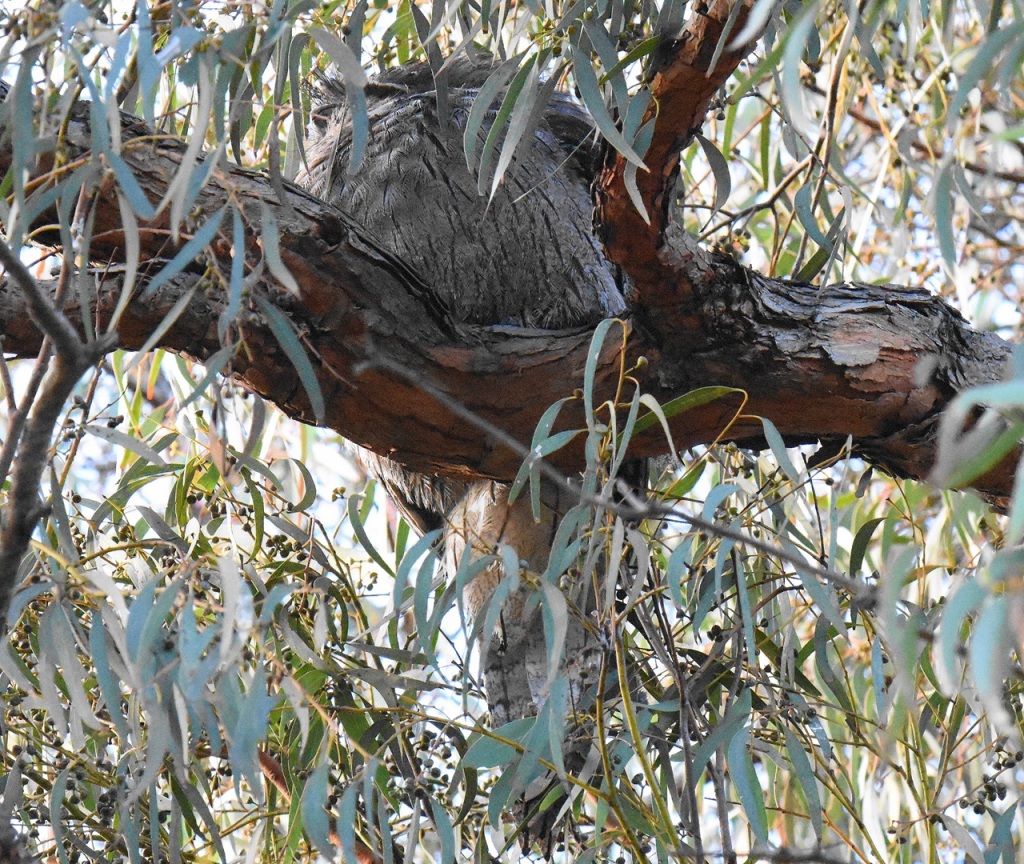

Tawny Frogmouth. Photos by Steve Hoptroff
Magpie Larks and Noisy Miners were also making their presence known and a white-faced Heron was noted over the Storage Pond.
By 10am we had a group of 13 and it wasn’t too long before we were joined by R from India. Another overseas visitor returning for some Aussie birding. Everyone was prepared for a bit of rain and eager to get underway. So, we made our way toward the filtration pond and commenced a gradual skirting of the Western and Northern edges, beginning at the outlet that feeds the Storage Pond. The link below gives a bit of history, a functional description and a site map, which may be used to help remember the locations. The eBird map of the walk is included at the end which may also help.
Trin Warren Tam-boore wetland | City of Melbourne Urban Water.
We skirted the pool in a clockwise direction and almost immediately Jayne picked up a Buff banded Rail on the path, seconds before it retreated to cover. A Pacific Black Duck was dabbling in the water amongst the reeds and a Purple Swamphen was deftly balancing on some of the stiffer looking grasses.
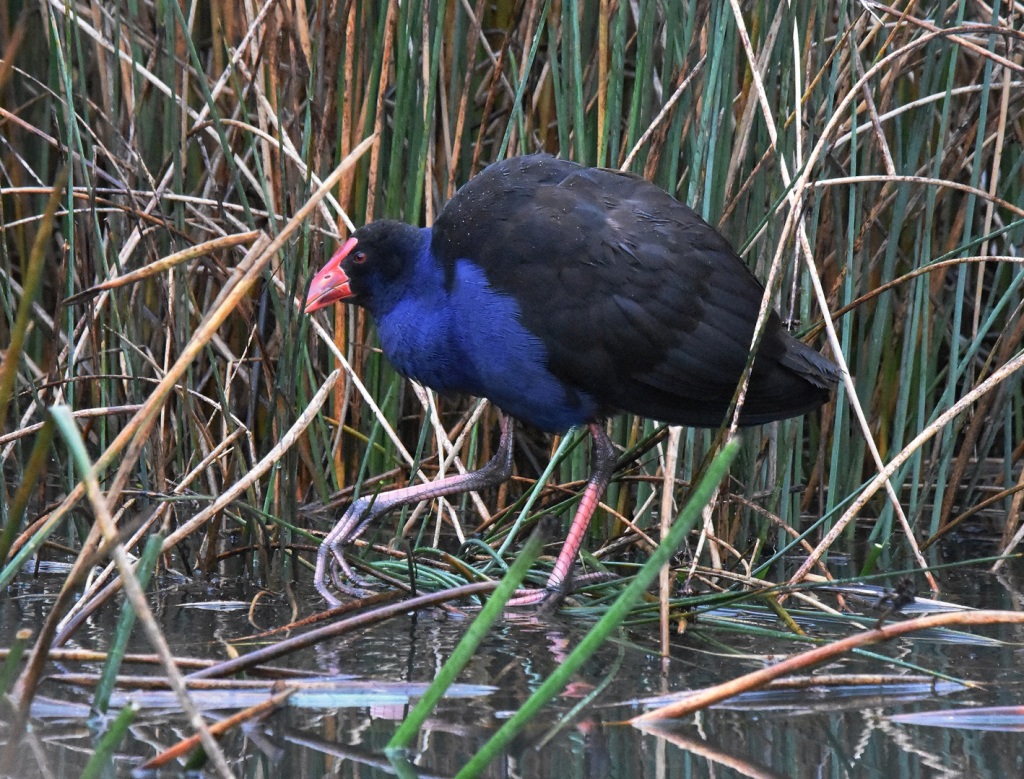
Rainbow Lorikeets were making flybys quite low over the trees that surround the pond, and Galahs circled a little bit higher. The vegetation between the path and the pond is very thick and provides excellent cover for small birds, making any sightings quite hard to come by. Listening skills became important. We made a diversion onto the boardwalk into the centre of the filtration zone and spent some time observing from here. Welcome Swallows were hawking insects mid-story and Silver Gulls were occasionally observed flying over. Two Australasian Grebes came quite close and provided some excellent photo opportunities.



Superb Fairy-wrens and Red Wattlebirds were heard, and the call of Bell Miners rang out from the Eucalypts in the Northeastern corner. We proceeded back to the gravel path on the Northern side and worked a little harder on the small birds but only managed a Superb Fairy-wren atop the Lignum.
The next stop was the observation hide next to the filtration pond inlet. Here, we added two more Purple Swamphen and two more Pacific Black Duck. The call of the Bell Miners was now challenging the group to see one. Though noisy and quite colourful they can be hard to locate, but once again the photographers were up to the challenge.

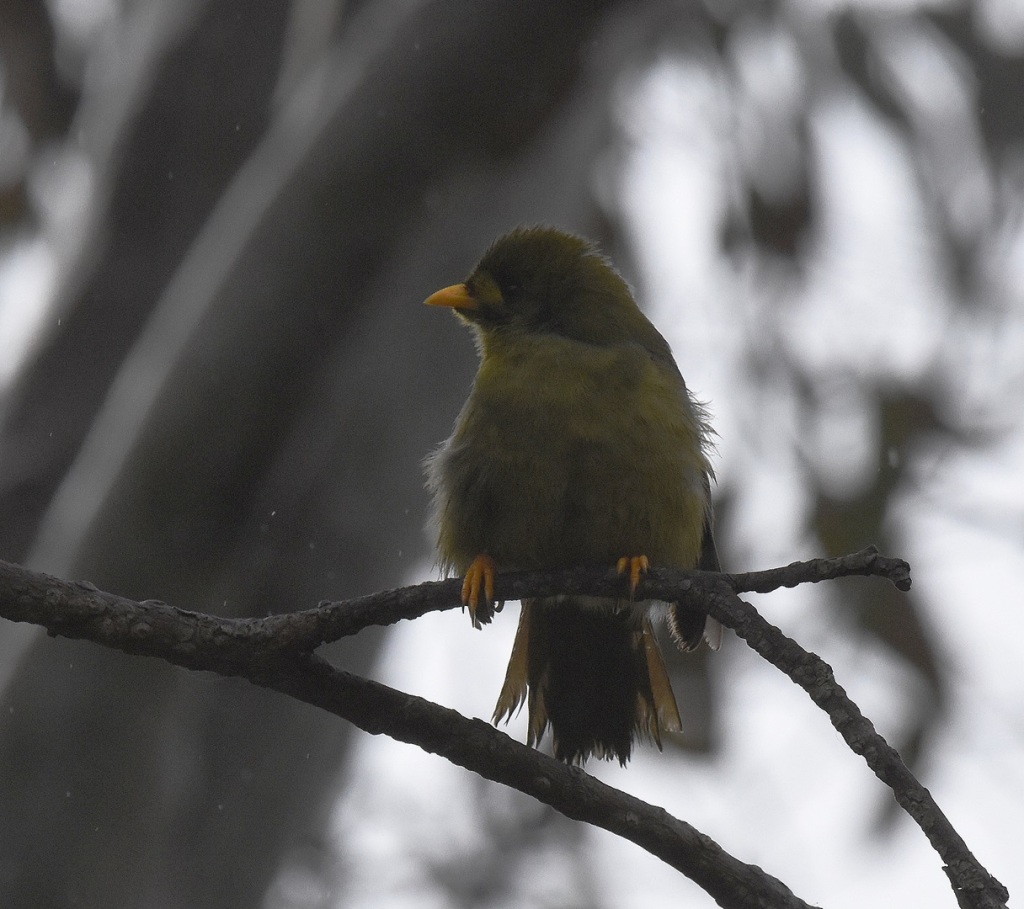
We headed to a gate that allows some views to the feeder creek and it wasn’t long before we saw four or five Superb Fairy-wrens and a busy Willie Wagtail.

See below for a heads up regarding an ongoing project monitoring Superb Fairy-wrens that includes Parkville.
At this point we met up briefly with an acquaintance of Clancy’s who let us in on some of the Tawny Frogmouth secrets of the area and pointed out that a Western Gerygone had been seen near the skink habitat. Unfortunately, we didn’t come across this bird, but it does serve as a reminder that this site is a Hot Spot and is well worth a return visit for those who live in inner Melbourne.

From here we moved along the Eastern edge toward the path that skirts around the bottom of the Skink habitat. This took us very close to a couple of flowering Eucalypts that were positively alive with honeyeaters. We could have spent upwards of twenty minutes here looking to get every species feeding in those trees but after a difficult ten minutes had to be content with lots of New Holland Honeyeaters, lots of Red Wattlebirds, some White-plumed Honeyeaters, an Eastern Spinebill and a Little Wattlebird.
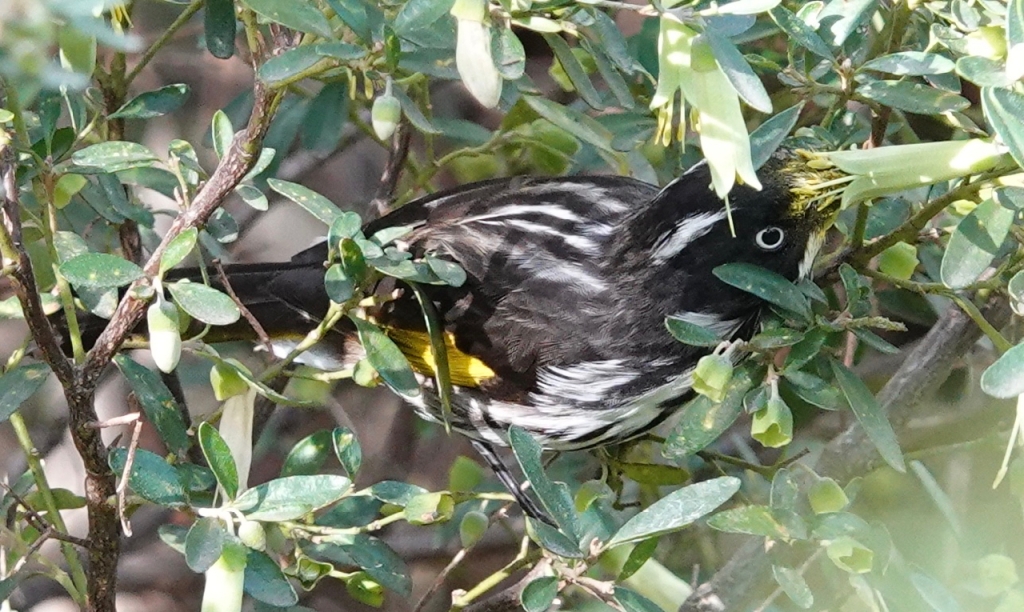


New Holland Honeyeater. Photos taken, from left to right, by Clancy Benson, Loh Kat Mun and Steve Hoptroff.
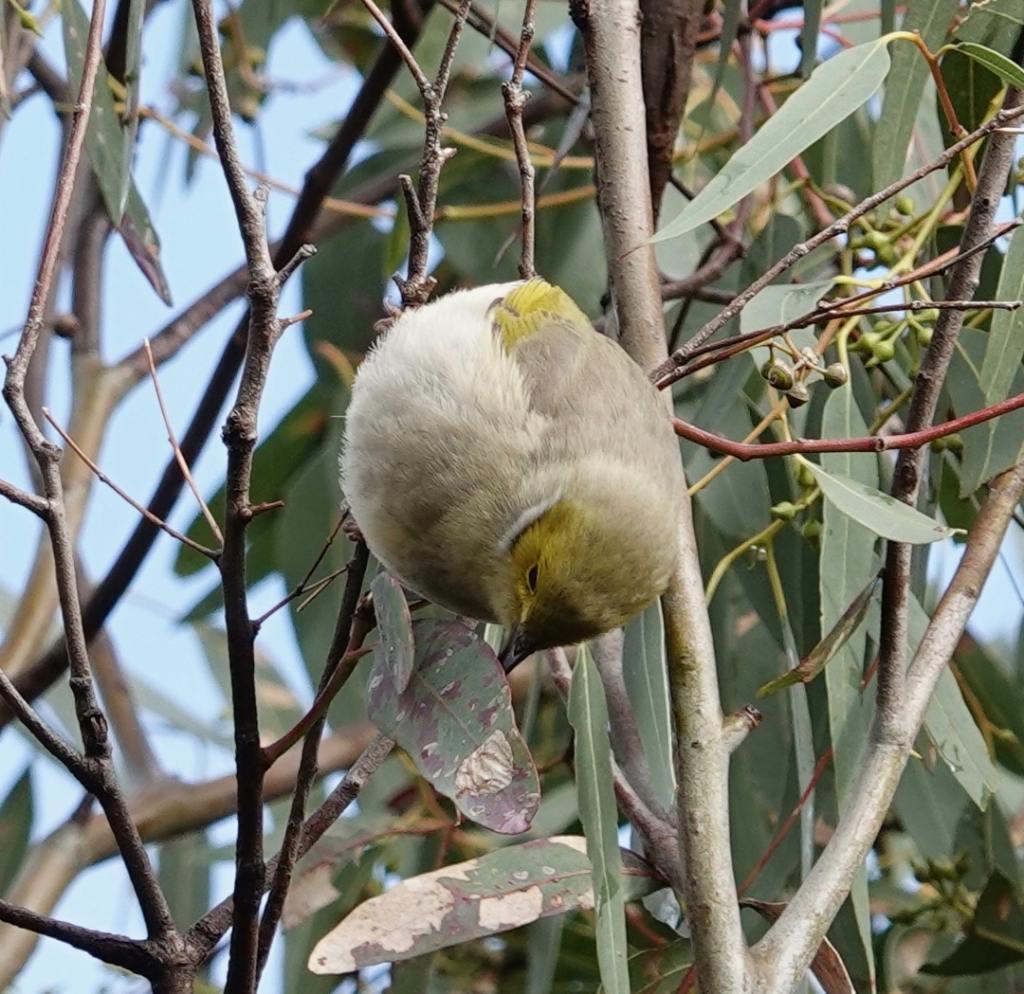

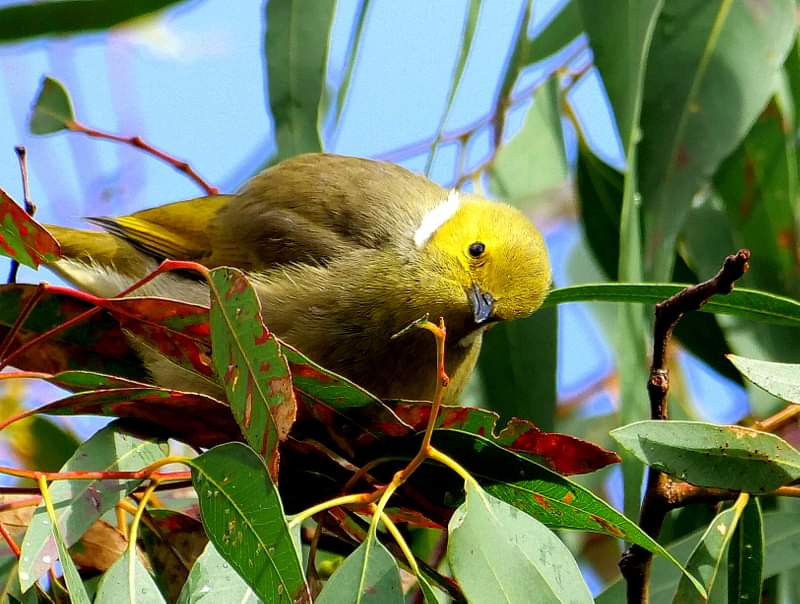
White-plumed Honeyeater. Photos by Clancy Benson (left) and Loh Kat Mun (middle and right)
The possible presence of White-naped Honeyeater had kept us looking but no definite sightings.
As we moved along the bottom of the skink habitat we hit another flurry of activity. First, we spotted three Australian White Ibis flying over and then a Black-shouldered Kite conveniently perched on a dead stump…one for the photographers.
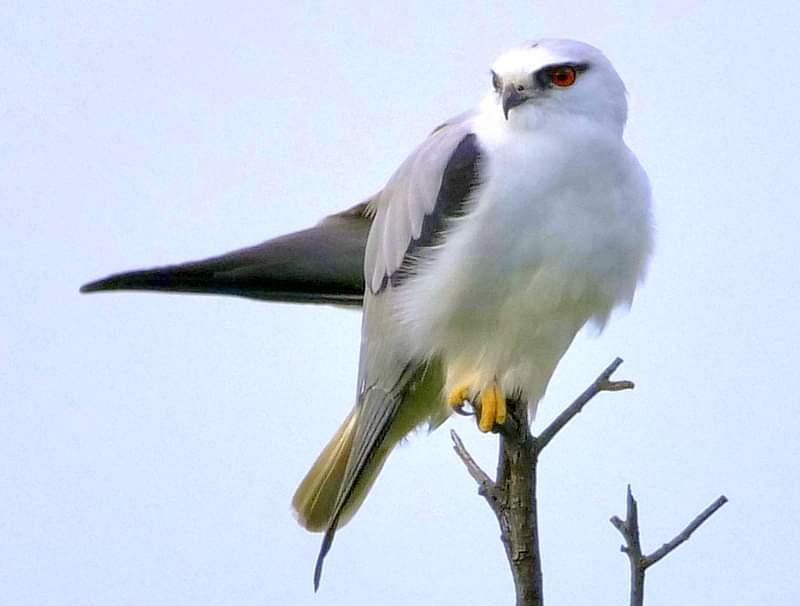


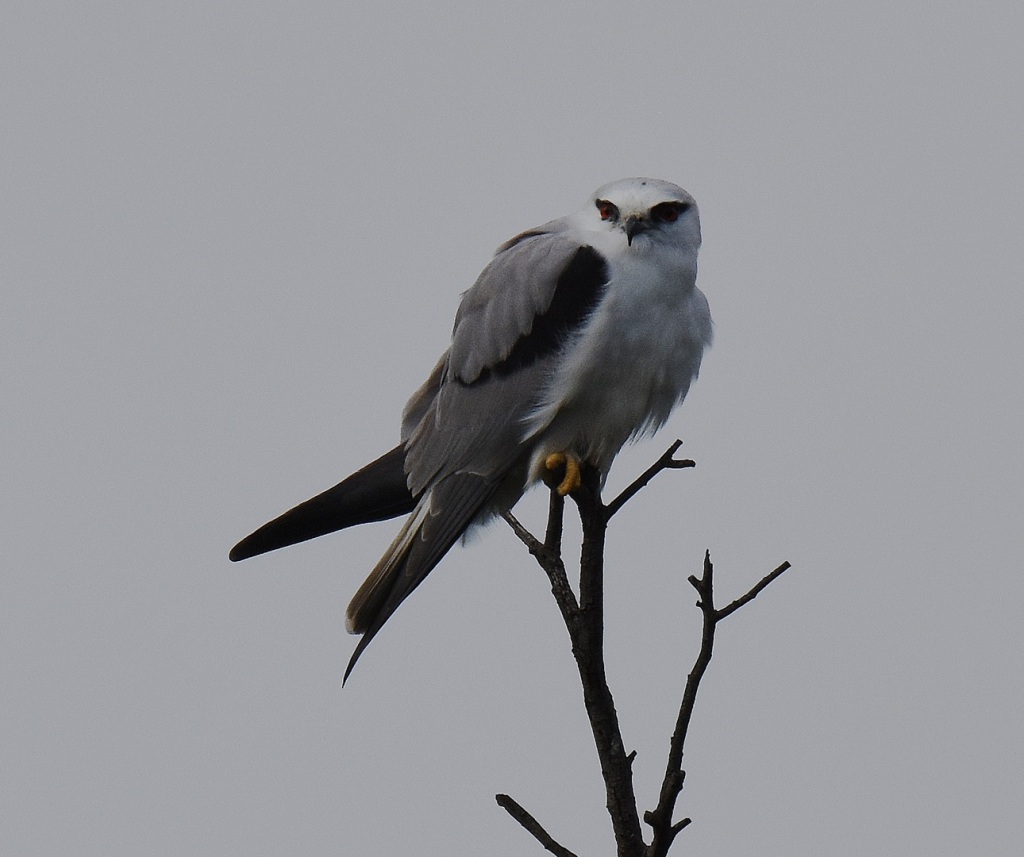

Black-shouldered Kite. Photos by Loh Kat Mun (top row); Clancy Benson (middle); Steve Hoptroff (bottom row)
Next, a bevy of small birds decided to show up in the young trees at the edge of the path. We noted Silvereye, Red-browed Finch, Spotted Pardalote and Superb Fairy-wrens. Welcome Swallows were again busy over the rocky area.
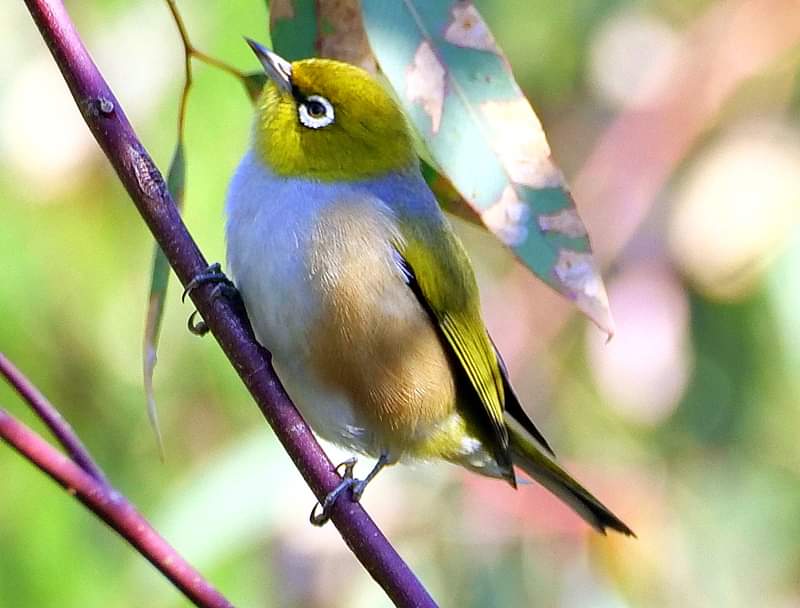
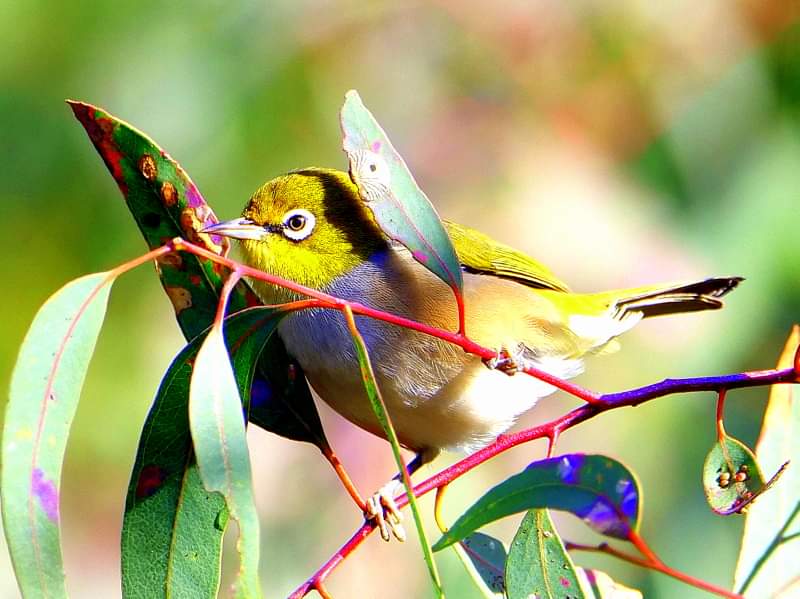


Silvereye. Photos by Loh Kat Mun (top row); Steve Hoptroff (middle); Clancy Benson (bottom row)
From here the path took us up toward the main trail next to the railway line. Crested Pigeon and Spotted Dove were noted here, and a small group of Common Starling flew over. Turning right we followed the bike path for a short distance and then branched off onto a track that runs along a ridge above and Northwest of the railway line. There was lots of activity here too. This little track often provides good sightings and today was no different. Spotted Pardalote came down low and offered up some excellent views.
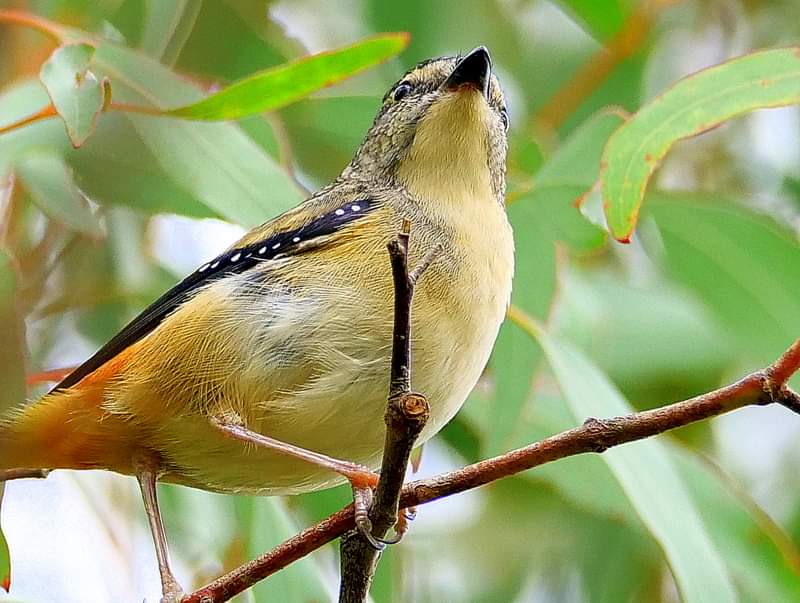
Spotted Pardalote. Photos by Loh Kat Mun (top); Clancy Benson (bottom)
The flowering Correa was attracting some honeyeaters with White-plumed and New Holland again present. Eastern Spinebills could be heard but proved more difficult to view. A little further along, on the far side of the railway line, we stopped opposite a large Eucalypt that was in flower and full of Lorikeets. Careful observation yielded Musk and Rainbow Lorikeets with the former in reasonable numbers.
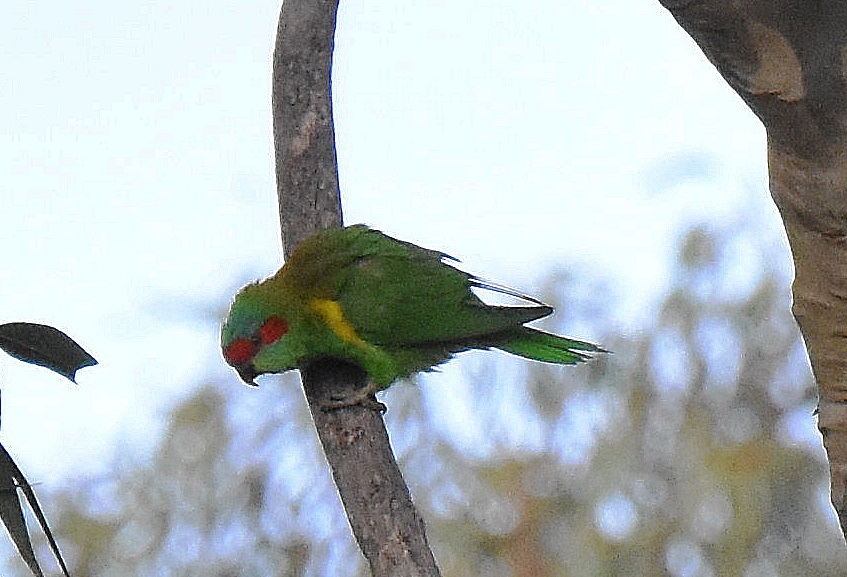
Soon, the presence of a Grey Fantail enticed us a little further. It was very quickly joined by a group of a dozen or more Silvereyes showing off their colours and chattering amongst themselves as they all led us onward … delightful. Jayne’s eagle eye spotted a Common Bronzewing in the scrub that stretches down to the skink rocks, and while retracing our steps we turned up a female Golden Whistler.
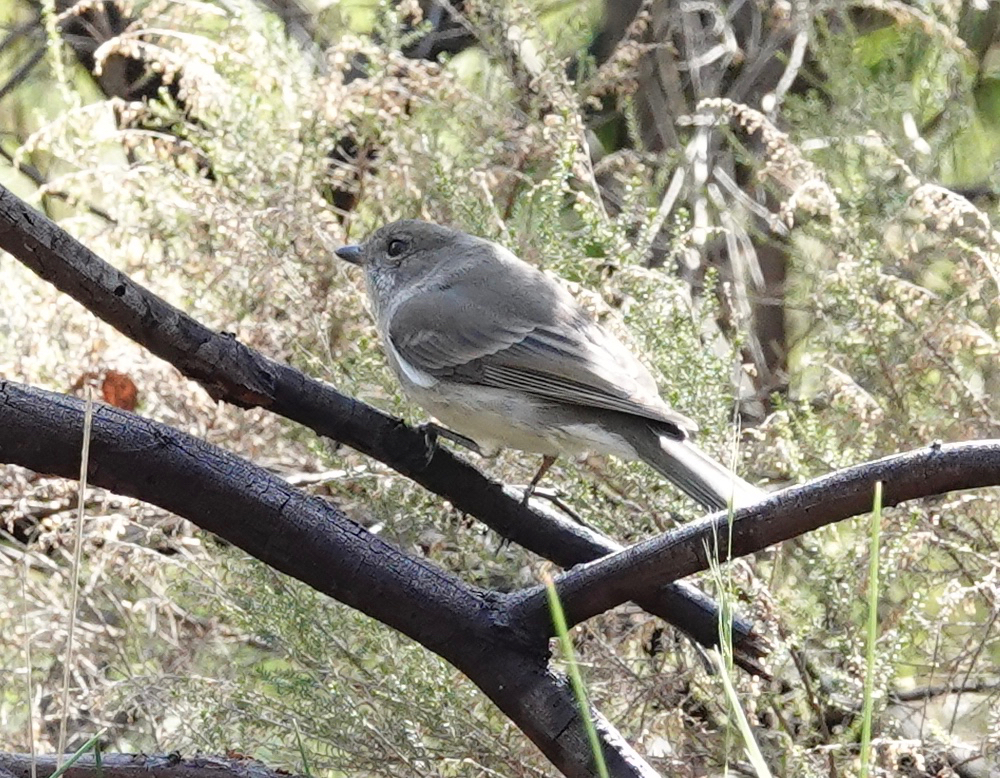
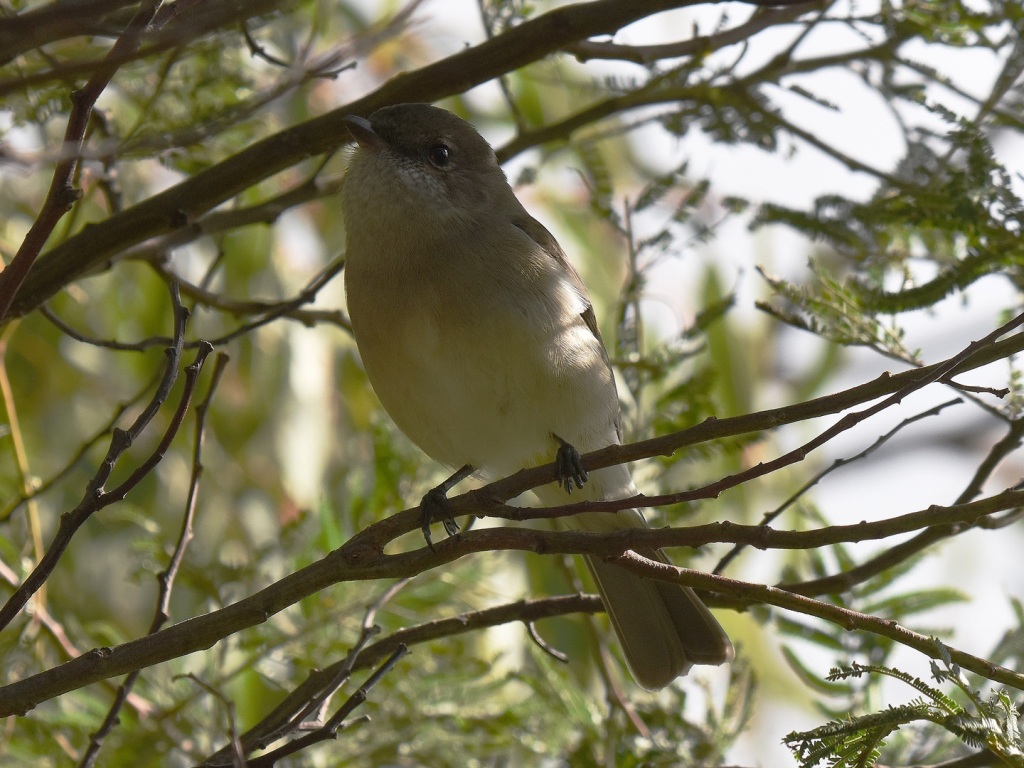

Golden whistler. Photos by Clancy Benson (top); Steve Hoptroff (bottom)
Once back at the bike path we turned left and down through the skink habitat toward the Ross Straw Field. Not a lot of activity in this section and we would have been lucky indeed to spot White’s Skink. We then headed back to the filtration pond for one last look before lunch. Dianne found us a Grey Butcherbird unobtrusively sitting in a tree not far above eye level as we settled for lunch on the raised grassy bank near where we started. During lunch some Chestnut Teal were observed on the pond.

After lunch we crossed Oak Street and followed the pavement to the southern end of the Storage Pond. A little Pied Cormorant was noted using a short stump as an observation post. As we left the footpath and began our circuit of the pond a Buff-banded Rail scurried from some clumpy grass and into the dense cover near the water. The deeper and more open water in this pond held Eurasian Coot, Dusky Moorhen, Australian Swamphen, Pacific Black Duck, Australasian Grebe and two female Hardheads.
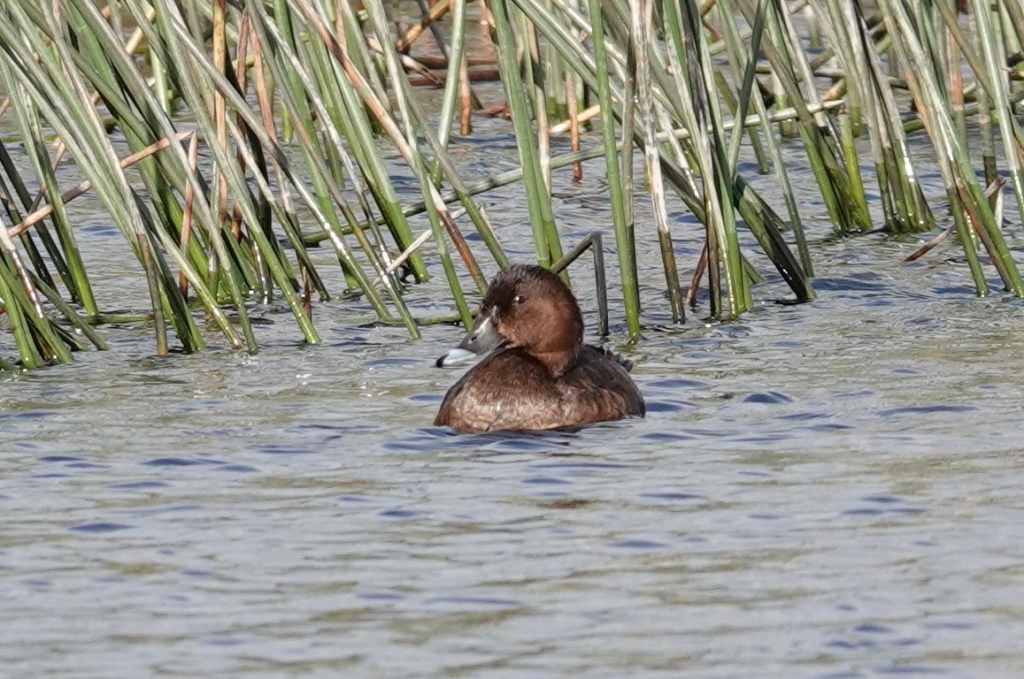


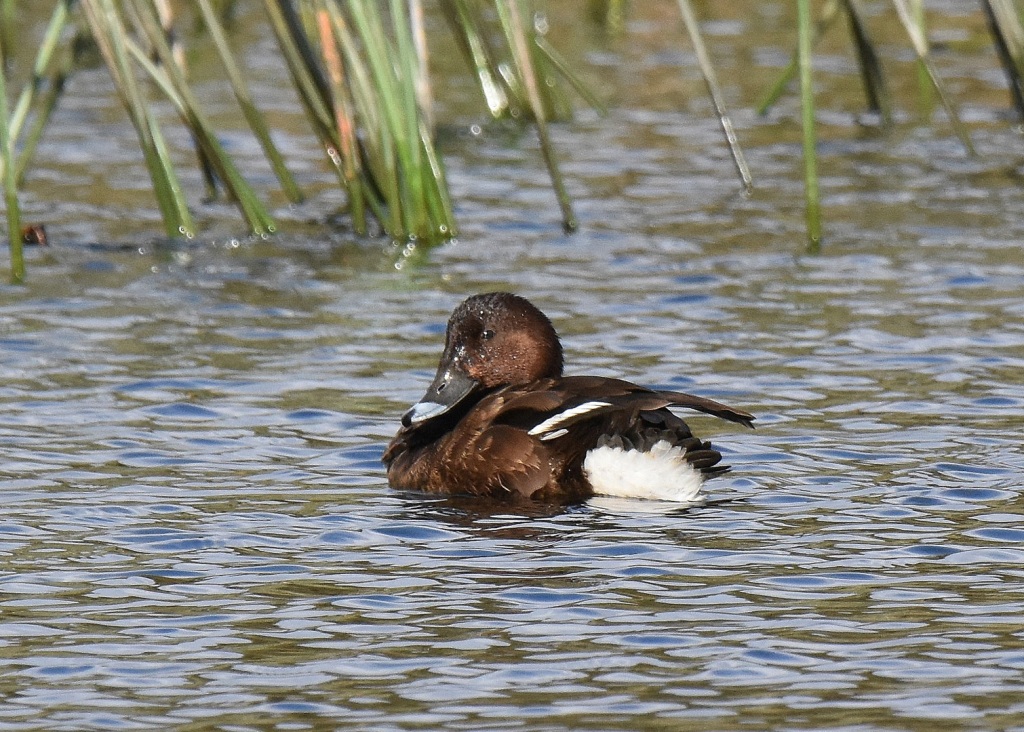
Hardheads. Photos by Clancy Benson (top); Loh Kat Mun (middle); Steve Hoptroff (bottom)


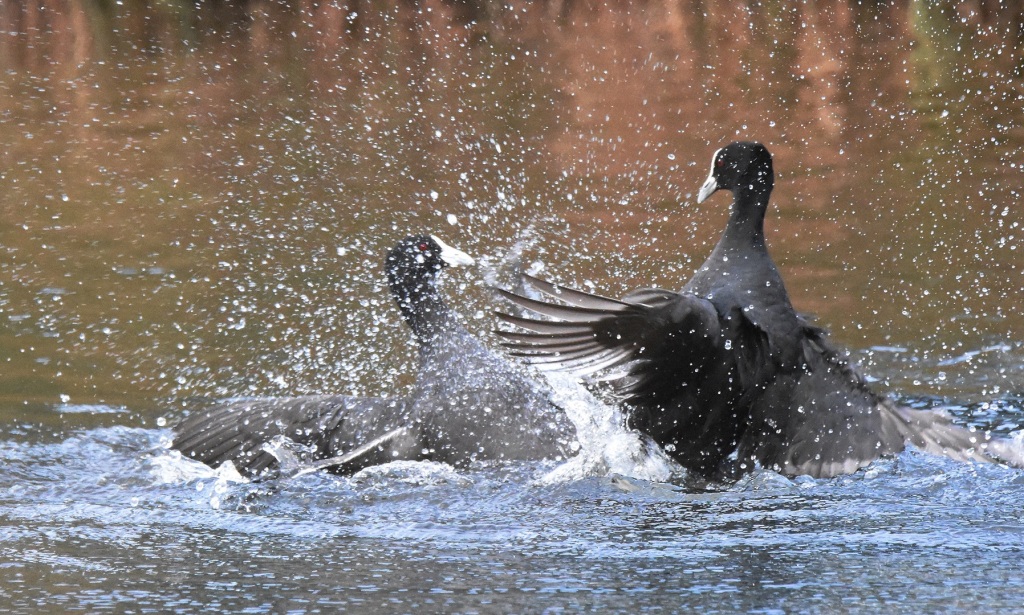
Eurasian Coot attack. Photos by Steve Hoptroff
Rainbow Lorikeets and Welcome Swallows provided the airborne activity. Little Raven and Common Blackbird also reminded us of their sometimes-overlooked presence.
As we had some time after completing the Storage Pond, we took a short stroll up the path that runs between Galada Avenue and Bunjil Way … noting the presence of more Superb Fairy-wrens and one or two White-plumed Honeyeaters.


White-plumed Honeyeater. Photos by Steve Hoptroff
Welcome Swallows were once more busy overhead.
This was a very pleasing day with plenty to excite our members and a really good bird list for the day totalling 43 species. Details may be found at the survey link below.
http://birdata.birdlife.org.au/survey?id=10029255&h=5ac9c7e0
Photos kindly provided by Steve Hoptroff, Clancy Benson and Loh Kat Mun.
Phillip.
